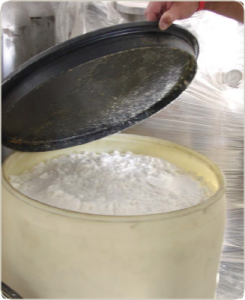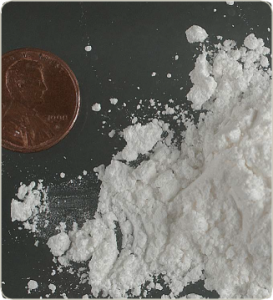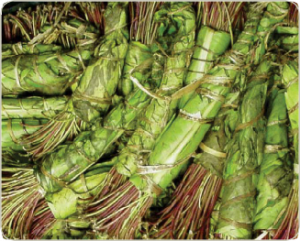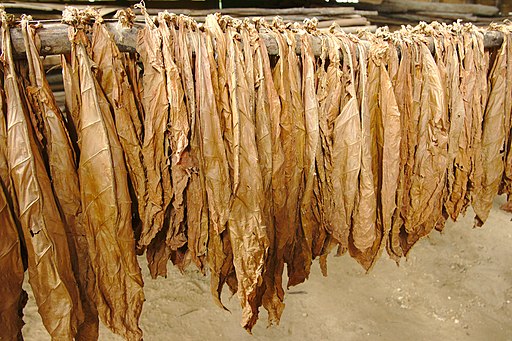3.5 Examples of stimulants
What are Amphetamines?
Amphetamines are stimulants that speed up the body’s system. Many are legally prescribed and used to treat attention-deficit hyperactivity disorder (ADHD).
What is their origin?
Stimulants like amphetamine were developed as pharmaceutical drugs in the late 1920s, treating ashtma and other bronchial ailments. Amphetamine was first marketed in the 1930s as Benzedrine in an over-the-counter inhaler to treat nasal congestion. By 1937 amphetamine was available by prescription in tablet form and was used in the treatment of the sleeping disorder narcolepsy and ADHD. As for amphetamine, its pharmacological effects on attention and cognition, emotions, and appetite were explored thoroughly in the 1930s and 1940s.[1] Amphetamines began to be controlled by the Narcotic Control Act in 1961 which is now Canada’s Controlled Drug and Substances Act.
What do they look like?
Amphetamines can look like pills or powder.
How are they administered?
Amphetamines are generally taken orally or injected. However, the addition of “ice,” (the slang name of crystallized methamphetamine hydrochloride) has promoted smoking as another mode of administration. Just as “crack” is smokable cocaine, “ice” is smokable methamphetamine.
What is their effect on the mind?
The effects of amphetamines and methamphetamine are similar to cocaine, but their onset is slower and their duration is longer. In contrast to cocaine, which is quickly removed from the brain and is almost completely metabolized, methamphetamine remains in the central nervous system longer, and a larger percentage of the drug remains unchanged in the body, producing prolonged stimulant effects. Chronic use produces a psychosis that resembles schizophrenia and is characterized by paranoia, picking at the skin, preoccupation with one’s own thoughts, and auditory and visual hallucinations. Violent and erratic behavior is frequently seen among people use have an amphetamine or methamphetamine use disorder.
What is their effect on the body?
Physical effects of amphetamine use include increased blood pressure and pulse rates, insomnia, loss of appetite, and physical exhaustion.
What is their legal status in Canada?
Amphetamines are Schedule I stimulants, and are available only through a prescription.
What is Methamphetamine?
Methamphetamine (meth) is a stimulant.
What is its origin?
Methamphetamine (meth) is a derivative of amphetamine and was synthesized in Japan in 1919. According to Parsons,[2] methamphetamine was used to treat a number of chronic illnesses, including asthma, schizophrenia, depression, Parkinson’s disease, and narcolepsy.
What does it look like?
Regular meth is a pill or powder. Methamphetamine also comes in crystal forms (crystal meth), which resembles glass fragments or shiny blue-white “rocks” of various sizes.
How is it administered?
Meth is swallowed, snorted, injected, or smoked.

What is its effect on the mind?
Meth is a potent substance with central nervous system (CNS) stimulant properties. People who smoke or inject it report a brief, intense sensation, or rush. Oral ingestion or snorting produces a long-lasting high instead of a rush, which reportedly can continue for as long as half a day. Both the rush and the high are believed to result from the release of very high levels of the neurotransmitter dopamine into areas of the brain that regulate feelings of pleasure. Long-term meth use results in many damaging effects, including the development of a substance use disorder.
Researchers have reported that as much as 50 percent of the dopamine-producing cells in the brain can be damaged after prolonged exposure to relatively low levels of meth. Researchers also have found that serotonin-containing nerve cells may be damaged even more extensively.
What is its effect on the body?
Methamphetamine use can result in increased wakefulness, increased physical activity, decreased appetite, rapid breathing and heart rate, irregular heartbeat, increased blood pressure, and “hyperthermia” (overheating). High doses can elevate body temperature to dangerous, sometimes lethal, levels, and cause convulsions and even cardiovascular collapse and death. Meth use may also cause extreme anorexia, memory loss, and severe dental problems. High usage may result in death from stroke, heart attack, or multiple organ problems caused by overheating. Please review this overview of methamphetamine use in Canada.
What is its legal status in Canada?
Methamphetamine is a Schedule I stimulant under the CDSA.
IN THE NEWS: READ
Caught in a crisis: While Canada is preoccupied with opioid addiction, crystal meth is on the rise — and threatens to deepen the country’s drug emergency by Nicole Ireland posted January 14, 2020 to CBC News Interactive.
What is Cocaine?
Cocaine is an intense, euphoria-producing stimulant.
What is its origin?
Cocaine is derived from coca leaves grown in some countries in South America. Acording to the UNODC[3] from the end of World War II until the late 1990s, almost all the world’s coca bush was grown in Peru and the Plurinational State of Bolivia, and since the 1970s, most of this output was refined into cocaine in Colombia. The cocaine manufacturing process takes place in remote labs where the raw product undergoes a series of chemical transformations. Colombia now produces about 50% of the cocaine powder reaching North America.
What does it look like?
Cocaine is usually distributed as a white, crystalline powder, it is often diluted (“cut”) with a variety of substances. In contrast, cocaine base (crack) looks like small, irregularly shaped chunks (or “rocks”) of a whitish solid.
How is it administered?
Powdered cocaine can be snorted or injected into the veins after dissolving in water. Cocaine base (crack) is smoked. Cocaine is also used in “speedballing” (a practice where the cocaine is combined with opioids, like heroin). Although injecting, snorting, and smoking are the common ways of using cocaine, all mucous membranes readily absorb cocaine.

What is its effect on the mind?
The intensity of cocaine’s euphoric effects depends on how quickly the drug reaches the brain, which depends on the amount and method of use. Following smoking or intravenous injection, cocaine reaches the brain in seconds, with a rapid buildup in levels (check section 3.1 for routes of administration). This results in a “rush” (a rapid-onset, intense euphoric effect).
By contrast, the euphoria caused by snorting cocaine is less intense and does not happen as quickly due to the slower build-up of the substance in the brain. Other effects include increased alertness and excitation, as well as restlessness, irritability, and anxiety.
Tolerance to cocaine’s effects develops rapidly, causing people to take higher and higher doses. Taking high doses of cocaine or prolonged use can cause paranoia. The crash that follows euphoria is characterized by mental and physical exhaustion, sleep, and depression lasting several days. Following the crash, people often experience a craving to use cocaine again.
What is its effect on the body?
Physiological effects of cocaine use include increased blood pressure and heart rate, dilated pupils, insomnia, and loss of appetite. The use of highly pure cocaine has led to many severe adverse health consequences such as cardiac arrhythmias, ischemic heart conditions, sudden cardiac arrest, convulsions, strokes, and death. In some people, the long-term use of inhaled cocaine has led to a unique respiratory syndrome, and chronic snorting of cocaine has led to the erosion of the upper nasal cavity.
What is its legal status in Canada?
Cocaine is a Schedule I drug under the CDSA.
IN THE NEWS: READ
On Canada’s East Coast, an Unexplained Influx of Pure Cocaine by Matthew Bonn posted March 25, 2021 in Filter Magazine.
What is Khat?
Khat is a flowering evergreen shrub that is used for its stimulant-like effect. Khat has two active ingredients, cathine, and cathinone.
What is its origin?
Khat is native to countries in Eastern Africa including Ethiopia and the Arabian Peninsula, where the use of it is an established cultural tradition for many social situations. “Cultures in East Africa and the Arabian Peninsular have used khat as a stimulant since the seventh century and the practice of coming together to chew the leaves of the khat plant has acquired unique cultural importance”.[4] Khat use is prevalent in Ethiopia in particular amongst the Oromo people; it is used not only at weddings, births, funerals and other celebratory events, but can be used daily as part of “barcha” or the afternoon chew.[5]

What does it look like?
Khat is a flowering evergreen shrub, the leaves of the shrub are used.
How is it administered?
Khat is typically chewed like tobacco, then retained in the cheek and chewed intermittently to release the active drug, which produces a stimulant-like effect. Dried Khat leaves can be made into a tea or a chewable paste, and Khat can also be smoked and even sprinkled on food.
What is its effect on the mind?
Khat can induce a stimulant-like alertness, but has a very low potency. According to Mitchell[6] the ephedrine-like effects in khat are closer to cigarettes than a cup of coffee. It’s more like a nicotine patch.
What is its effect on the body?
Khat causes an increase in blood pressure and heart rate. Khat can also cause a brown staining of the teeth, insomnia, and gastric disorders. The amount needed to constitute an overdose is not known. Symptoms of toxicity include delusions, loss of appetite, difficulty with breathing, and increases in both blood pressure and heart rate.
What is its legal status in Canada?
Khat is a Schedule IV substance under the CDSA.
IN THE NEWS: READ
Woman who brought khat to Canada wins appeal: A court panel upholds the woman’s absolute discharge, saying the Crown failed to show that the mild, leafy drug was harmful. by Betsy Powell posted April 20, 2012 in the The Toronto Star.
What is Tobacco?

Tobacco is a plant grown for its leaves, which are dried and fermented before being put in tobacco products. Tobacco contains nicotine.
What is its origin?
Tobacco was grown in countries in South America and North America and has been used by Indigenous communities as a cultural and traditional herb. Tobacco “used in ritual, ceremony, and prayer, tobacco was considered a sacred plant with immense healing and spiritual benefits and was used by Indigenous cultures across Canada”.[7]
Watch the video Traditional Tobacco Use by Alberta Health Services[8]
How is it administered?
People can smoke, chew, or sniff tobacco. Smoked tobacco products include cigarettes, cigars, bidis, and kreteks. Some people also smoke loose tobacco in a pipe or hookah (water pipe). Chewed tobacco products include “chew” (chewing tobacco), snuff, dip, and snus; snuff can also be sniffed.
What is it’s effect on the mind?
The nicotine in any tobacco product readily absorbs into the blood when a person uses it. Upon entering the blood, nicotine immediately stimulates the adrenal glands to release the hormone epinephrine (adrenaline). Epinephrine stimulates the central nervous system and increases blood pressure, breathing, and heart rate. As with other stimulants, nicotine activates the brain’s reward circuits and also increases levels of the chemical messenger dopamine, which reinforces rewarding behaviors. Studies suggest that other chemicals in tobacco smoke, such as acetaldehyde, may enhance nicotine’s effects on the brain.
What is its effect on the body?
Prolonged use can lead to lung cancer, chronic bronchitis, and emphysema. It increases the risk of heart disease, which can lead to stroke or heart attack. Non traditional use of tobacco has also been linked to other cancers, leukemia, cataracts, and pneumonia. Chew increases the risk of cancer, especially mouth cancers. Non traditional tobacco smoking can impact women who are pregnant and the fetus. People who are exposed to secondhand smoke are at a higher risk of lung cancer and heart disease. It can cause health problems in both adults and children, such as coughing, phlegm, reduced lung function, pneumonia, and bronchitis. Children exposed to secondhand smoke are at an increased risk of ear infections, severe asthma, lung infections, and death from sudden infant death syndrome.
What is its legal status in Canada?
The 2018 Tobacco and Vaping Products Act regulates the manufacture; sale; packaging and labeling; and advertising, promotion and sponsorship of tobacco and vaping products.[9]
3.5A Activities
- There are many ways to use tobacco as a tradition. Listen to the following podcast to see how Indigenous communities in Canada are using tobacco as a way to heal from abuse and trauma. Tobacco Nation Episode 3 – Tradition by the First Nations Health Authority
(Please note this podcast discusses sexual abuse and trauma and may activate listeners) - List other ways tobacco can be used in traditions.
Food For Thought
- Do you think e-cigarettes or vapes are a healthier alternative to smoking?
- Is it possible to overdose on nicotine?
IN THE NEWS: WATCH
E-cigarettes: Welcome back big tobacco, aired October 21, 2016 on CBC’s current affair program The Fifth Estate. Available via YouTube.
Chapter Credit
Adapted from Unit 3.4 in Drugs, Health & Behavior by Jacqueline Schwab. CC BY-NC-SA. Updated with Canadian Content.
Image Credits
- Methamphetamine, Cocaine, and Khat, Drugs of Abuse from: U.S. Department of Justice Drug Enforcement Administration. (2017). Drugs of abuse, (pp. 51, 53, 54). https://www.dea.gov/sites/default/files/2018-06/drug_of_abuse.pdf
- Air curing of tobacco leaves in Cuba by Alexander Klink via Wikimedia Commons is licensed under CC BY 4.0
- Rasmussen N. (2015). Amphetamine-type stimulants: The early history of their medical and non-medical uses. International Review of Neurobiology, 120, 9-25. https://pubmed.ncbi.nlm.nih.gov/26070751/ ↵
- Parsons, N. (2013) Meth mania; A History of methamphetamine. Lynne Rienner Publishers. ↵
- UNODC. (2010). The global cocaine market. https://www.unodc.org/documents/wdr/WDR_2010/1.3_The_globa_cocaine_market.pdf ↵
- Stevenson M., Fitzgerald, J., & Banwell, C. (1996). Chewing as a social act: cultural displacement and khat consumption in the East African communities of Melbourne. Drug Alcohol Review, 15(1), 73-82. https://pubmed.ncbi.nlm.nih.gov/16203354/ ↵
- Gebissa, E. (2012). Khat: Is it more like coffee or cocaine? Criminalizing a commodity, targeting a community. Sociology Mind, 2, 204-212. https://www.researchgate.net/publication/267381622_Khat_Is_It_More_Like_Coffee_or_Cocaine_Criminalizing_a_Commodity_Targeting_a_Community ↵
- Mitchell, C. (2001). Brooklyn Yemenis indignant over police raids to seize leaves of the stimulant khat. The Journalism School, Columbia University. http://web.jr n.columbia.ed u/studentwork/h umanrig hts/khat- mit ↵
- First Nations Health Authority. (2021). Respecting Tobacco, (para. 1). https://www.fnha.ca/Documents/FNHA-Respecting-Tobacco-Brochure.pdf ↵
- Alberta Health Services. (2016, January 29). Traditional tobacco use. [Video]. Youtube. https://www.youtube.com/watch?v=PXFPBD6k73I ↵
- Government of Canada. (2018). Tobacco and vaping products act. https://www.canada.ca/en/health-canada/services/health-concerns/tobacco/legislation/federal-laws/tobacco-act.html ↵

